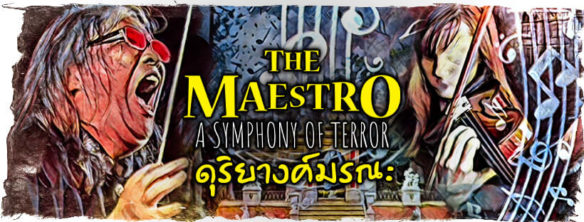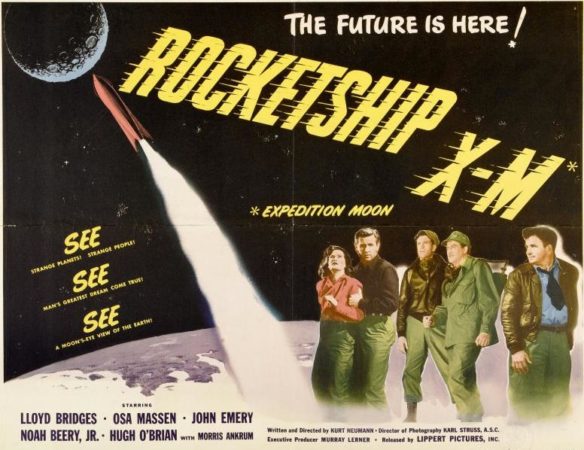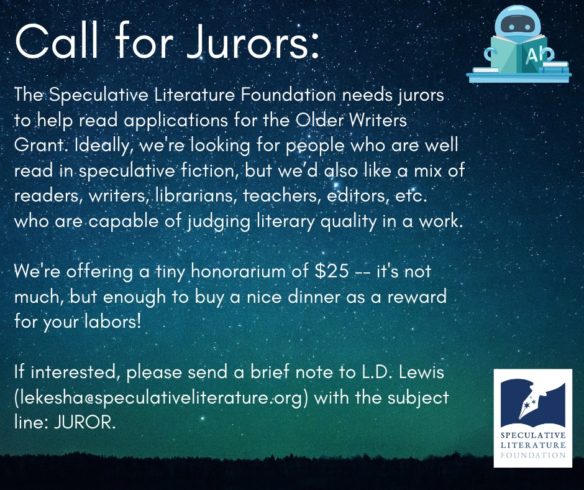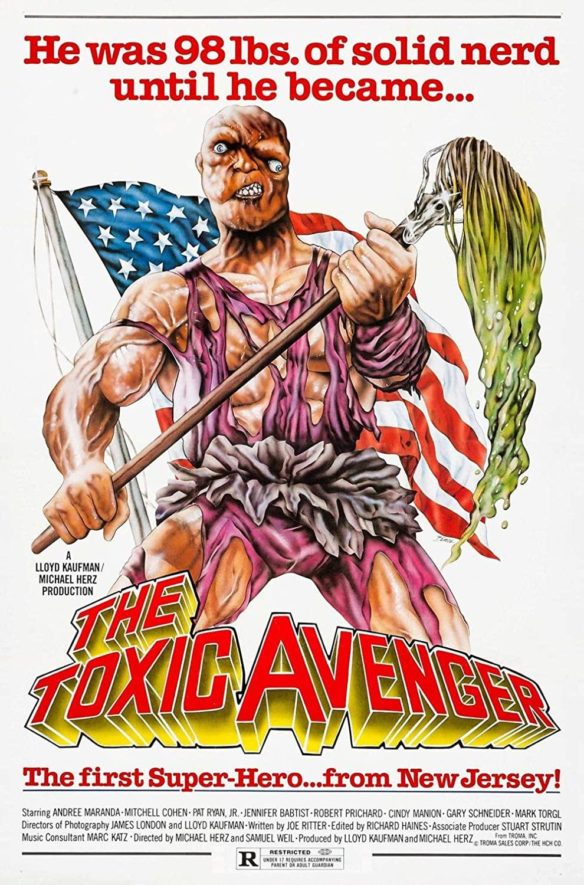(1) BUTLER’S NEW YORK PREMIERE. The New York Times interviews Toshi Reagon, co-creator of an opera based on Parable of the Sower. “Apocalypse Nowish: Singing the Prophetic Warnings of Octavia Butler”.
… It was the novel’s urgency, and the need to share it [Parable of the Sower] with as many people as possible, that prompted the composer and performer Toshi Reagon and her mother, Bernice Johnson Reagon, a founding member of the a cappella group Sweet Honey in the Rock, to adapt it into an opera — or what Toshi calls a “congregational opera.” “Parable of the Sower,” which has its New York premiere on Thursday at David Geffen Hall as part of Lincoln Center’s Summer for the City, includes a chorus made up of at least 170 community members from New York City’s five boroughs, making it the biggest production at Geffen Hall since its reopening in the fall.
Still, Toshi Reagon kept the music alive. When she and her band, BigLovely, performed at Reagon’s annual birthday concert series at Joe’s Pub in 2014, she closed her set with a few “Parable” songs. That’s where Shanta Thake, then the director of Joe’s Pub at the Public Theater, first heard them. Thake, who is now the chief artistic officer of Lincoln Center, recalled being “floored by the actual songs,” which ranged from folk to Black spirituals to protest music, and by their ability to teach “the power of participation in the work and in the world.”
She invited Reagon back the next year to present more of the opera as a work-in-progress at the Public’s Under the Radar Festival. And she committed herself to its further development, a pledge she kept in her new role at Lincoln Center and through the work’s many iterations as a concert, a gathering and now an opera.
Reagon has toured the world, spreading Butler’s ominous message through the opera and other platforms. In June 2020, she started hosting, with the writer Adrienne Maree Brown, “Octavia’s Parables,” a podcast in which they discuss Butler’s novels, one chapter at a time. And Reagon also created “Parable Path,” a series of community-based initiatives inspired by the opera…
Why an opera?
Neither one of us really writes dialogue, but we tell everything in a song. I remember my mom doing shows at DC Black Repertory Theater Company in Washington. I was a 9-year-old theater kid. And all of her songs were like opera. She called them song talks, and when she retired from Sweet Honey, she did a solo kind of song talking, and I would go and watch her work and they were really beautiful. So, I think that’s one of the reasons.
The other part is I like breaking up with things. I don’t know why they structured Western opera the way they did, but it makes sense to us that a story about journeying is a story about a lot of different voices operating together and finding their way to be a unit. We really simplified our story to Lauren’s last day [in her home near Los Angeles].
How did the community choir come about?
Last summer, we asked people: “You want to sing with Toshi? Sign up, and make your Lincoln Center debut.” It’s an all-volunteer choir. I had a series of Zooms so I could actively meet people. And these people are everything. There’s a dean of a college. There was a woman from Berlin who is working on translating Black books into these languages she knows how to speak. It was people coming back to New York and needing a reason to come back. There’s a cello player who was also a trucker.
We call it a “congregational choir” because if you had to build a congregation, you could do it out of these people. And nobody is getting paid money to come and sing, so the currency is different….
NPR also has a post about it: “Octavia Butler wrote a ‘Parable’ that became a prophecy — now it’s also an opera”.
(2) WATERSTONE’S DEBUT PRIZE. [Item by Steven French.] Some genre interest here with Nana Kwame Adjei-Brenyah’s dystopian novel Chain-Gang All-Stars on the shortlist: “Waterstones debut fiction prize 2023 shortlist announced” in the Guardian.
The prize, now in its second year, is voted for by Waterstones booksellers and open to all debut fiction published in the UK.
Though the prize is open to any debut novel written or translated into English, New York-based Adjei-Brenyah is the only writer on the 2023 shortlist who does not live in the UK or Ireland. Chain-Gang All-Stars, his first novel following a New York Times-bestselling collection of short stories, Friday Black, is set in an imagined near-future in which “gladiator” prisoners fight against one another for their freedom. Speaking about the novel in a Guardian interview, the author said America’s penal system was “a kind of poison that affects us, even if we’re not impacted directly. I wanted to speak to that.” LJ, a bookseller at Waterstones Haywards Heath, said of Chain-Gang All-Stars:“[It] made me feel every single emotion.”
…This year’s winner will be announced on 24 August.
(3) CAFFIENDS. “Six Shots of Espresso” is a Good Omens Season 2 sneak peek.
Crowley and Aziraphale visit the neighborhood coffee shop, Give Me Coffee or Give Me Death, where we meet Nina, the owner. While Crowley orders his caffeine fix, Aziraphale finds that he’s the subject of some salacious gossip.
(4) A SECOND OPINION. George Scithers was the founding editor of Isaac Asimov’s Science Fiction Magazine (1977-82) where he notably encouraged young writers. However, in later years working on Weird Tales he seems to have taken a much different approach. Cat Rambo tells about her bizarre experience trying to submit to that magazine on TikTok.
(5) OUT OF THE STARTING GATE. Camestros Felapton starts his review of the Hugo contenders: “Hugo 2023: Best Dramatic Presentation Long Form”.
You’ve got to start somewhere and as an avowedly lazy person, BDP:Long is a handy place to start. I’ve (sort of) watched them all and also none of the finalists really care very much, so I’m not ruining anybody’s happy time basking in the glow of Hugo recognition….
Despite the introduction it’s a pretty interesting review. Is Camestros related to Heinlein’s “The Man Who Was Too Lazy to Fail”?
(6) SIMULTANEOUS TIMES ARCHIVE. Space Cowboy Books has compiled and released all 36 issues of the fanzine Simultaneous Times Newsletter (2020-2023), featuring interviews with SF authors, editors, and publishers, as well as speculative poetry, book recommendations, and more. Download them free here.

Simultaneous Times Newsletter Year One:
Cover Art by Austin Arthur Hart
Interviews with: Mari Collier, David Farland, Christopher Ruocchio, Sarah Waites (Queer Science Fiction & Fantasy Database), Brent A. Harris, Rob Carroll (Dark Matter Magazine), Jason Sizemore (Apex Magazine), Weston Ochse, Marie Vibbert, JW Stebner (Hexagon Magazine)
Poetry and writing by: Holly Lyn Walrath, Samuel Butler, Therese Windser, Robin Rose Graves, Jean-Paul L. Garnier, Kim Martin, Thelma D. Hamm
Simultaneous Times Newsletter Year Two:
Cover Art by Zara Kand
Interviews with: Tom Purdom, A.C. Wise, Cora Buhlert, Charlie Jane Anders, Sean Clancy (Planet Scumm Magazine), Holly Lyn Walrath (Intersteller Flight Press), Christina Sng, Chris Kelso, Akua Lezli Hope, David Schultz (Speculative North Magazine), Jeanne Cavelos (Odyssey Workshop), Kay Allen (Sword & Kettle Press)
Poetry and writing by: James Clerk Maxwell, Gareth L. Powell, David Brin, F.J. Bergmann, Arley Sorg, Gabriel Hart, Marie Vibbert, Richard Magahiz
Simultaneous Times Newsletter Year Three:
Cover Art by Austin Arthur Hart
Interviews with: Guy Hasson (Geekdom Empowers), Rachel S. Cordasco (SF in Translation), Andy Dibble, Tristan Evarts (Utopia Magazine), Dr. Phoenix Alexander, Justin Sloane (Starship Sloane), Jonathan Nevair, Adrian M. Gibson (SFF Addicts), Michael Butterworth, Todd Sullivan
Poetry and writing by: Renan Bernardo, Jana Bianchi, Rodrigo Assis Mesquita, Pedro Iniguez, Mary Soon Lee, Robin Rose Graves
And more!
(7) EATING THE FANTASTIC. Scott Edelman tells listeners it’s time for a ramen reunion with my 1979 Clarion classmate Rhondi Salsitz in Episode 202 of the Eating the Fantastic podcast.

My guest this episode — my penultimate conversation while in California for this year’s Nebula Awards Conference — is Rhondi Salsitz, whom I met when I attended the Clarion Science Fiction Writing Workshop in 1979. This is the second time you’re getting the chance to eavesdrop as I chat with someone I met during that long ago summer, the first being Gene O’Neill way back in Episode 12.
You might have read Rhondi’s work without realizing it — because she’s also appeared under the names Charles Ingrid, Kendall Rivers, Sara Hanover, Emily Drake, Anne Knight, Elizabeth Forrest, Jenna Rhodes, Rhondi Greening, R.A.V. Salsitz, and Rhondi Vilott — and those are just a few of the pseudonyms under which she’s published over the past four decades. Rhondi’s first publication was actually one of the stories written while at Clarion, and was chosen by our teacher, Damon Knight, for publication in Orbit 21. (And believe me — we were envious! And some of us were even jealous.)
Since that time, she’s written so many books under so any names — not only science fiction, fantasy, and horror, but also romances, westerns, and choose your own adventure books — her prolific career has unfairly been overlooked, and I’m so glad I was able to get her to step out from behind the mask so you can learn more about her. Her series — include The Sand Wars (written as Charles Ingrid), Elven Ways (as Jenna Rhodes), Dragon Tales (as Rhondi Vilott), and many others.
We discussed her early missed opportunity to workshop with Octavia Butler, the terrible thing Tom Disch told her during their one-on-one meeting during Clarion, the animated series which inspired her to write her bestselling Sand Wars series of novels, why she feels she’s still standing when so many of our Clarion comrades aren’t, what caused a reader to write an angry letter to Dean Koontz about one of her novels, how she progressed from recognizing there was a problem but not knowing how to fix it to understanding what needed to be done, and so much more.
(8) DANIEL GOLDBERG (1949-2023). Producer Daniel Goldberg died July 12 at the age of 74 reports Deadline.
Daniel Goldberg, who produced all three The Hangover films, Space Jam, Old School and many others and co-wrote movies including the Bill Murray comedies Stripes and Meatballs...
Goldberg and Ivan Reitman collaborated for more than 30 years, working together on features including the animated Heavy Metal (1981); toon/live-action hybrid Space Jam (1996), starring Michael Jordan alongside Looney Toons characters; 1994’s Junior, starring Arnold Schwarzenegger as the world’s first pregnant man, along with Danny DeVito and Emma Thompson; … the 2001 sci-fi comedy Evolution, starring David Duchovny, Orlando Jones, Seann William Scott and Julianne Moore…
He also was an executive producer on a pair of animated TV series based on features: Beethoven and Extreme Ghostbusters.
(9) MEMORY LANE.
2007 – [Written by Cat Eldridge from a choice by Mike Glyer.]
So let’s about Nalo Hopkinson. The first work by her I read was Brown Girl in the Ring, a stellar telling of Afro-Caribbean culture with its themes of folklore and magical realism. Midnight Robber and The Salt Roads are equally worth reading. Her short fiction is equally well crafted with Falling in Love With Hominids, her latest collection, being a great place to start.
So Mike’s pick of her works for our Beginning is The New Moon’s Arms which was published sixteen years ago by Warner Books. The cover is a montage of four photos, all credited on the rear flap; over-all design by Don Puckey and Jesse Sanchez.
It won the Sunburst Award for Excellence in Canadian Literature of the Fantastic and the Prix Aurora Award for Best Canadian science fiction and fantasy works and activities in English and French. It was also nominated for John W. Campbell Memorial, Mythopoeic and Nebula Awards. And she won the Astounding Award for Best New Writer.
Now for this Beginning…
A CROWD HAD GATHERED AROUND MRS. WINTER. The commotion at the graveside vibrated with suppressed hilarity. Me, I wasn’t able to keep properly solemn. When my shoulders had started shaking with silent laughter, I’d ducked behind the plain pine coffin still on its stand outside the grave.
I bit my lips to keep the giggles in, and peeked around the coffin to watch the goings-on.
Mrs. Winter had given up the attempt to discreetly pull her bloomers back up. Through the milling legs of the mourners, I could see her trying desperately instead to kick off the pale pink nylon that had slithered down from her haunches and snagged around her ankles.
Her kick sent a tiny flash of gold skittering across the cemetery lawn to land near me. I glanced down. I picked up the small tangle of gold-coloured wire and put it in my jacket pocket for later. Right now, I had some high drama to watch.
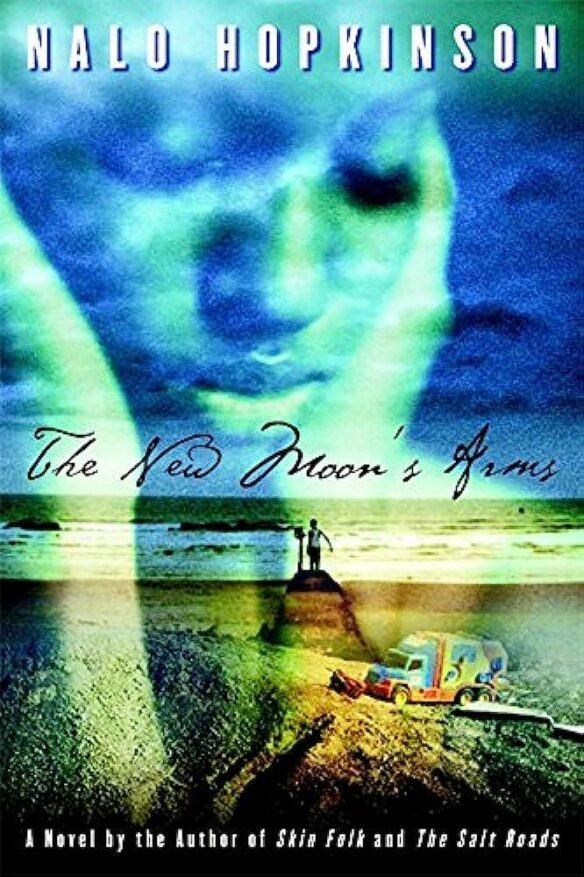
(10) TODAY’S BIRTHDAYS.
[Compiled by Cat Eldridge.]
- Born July 14, 1904 — Zita Johann. She’s best known for the lead performance in Karl Freund’s 1932 film The Mummy which also featured Boris Karloff. She wouldn’t show in another horror film for another fifty-four years when she was in Raiders of the Living Dead as a Librarian; her original career only lasted three years. She quit film to work in theater where she where she was a partner of John Houseman, her husband, who she was married to from 1929 to 1933, and with Orson Welles as well. She also taught acting to people with learning disorders. (Died 1993.)
- Born July 14, 1906 — Abner J. Gelula. One of the many authors* of Cosmos, a serialized novel that appeared first in Science Fiction Digest July 1933 and then has a really convoluted publication history that I won’t detail here. It was critiqued as “the world’s most fabulous serial,” “one of the unique stunts of early science fiction,”and conversely “a failure, miserable and near-complete.” The entire text, chapter by chapter, can be read here. (*To be precise, Earl Binder, Otto Binder. Arthur J. Burks, John W. Campbell, Jr., Lloyd Arthur Eshbach. Ralph Milne Farley, Francis Flagg, J. Harvey Haggard, Edmond Hamilton, David H. Keller, M.D., Otis Adelbert Kline, A. Merritt, P. Schuyler Miller, Bob Olsen, Raymond A. Palmer, E. Hoffmann Price and Edward E. Smith.)
- Born July 14, 1926 — Harry Dean Stanton. My favorite genre role for him? The video for Procul Harum’s “A Whiter Shade of Pale”. No, I’m not kidding. He also played Paul of Tarsus in The Last Temptation of Christ, Harold “Brain” Hellman in Escape from New York, Detective Rudolph “Rudy” Junkins in Christine, Bud in Repo Man, Carl Rod in Twin Peaks twice, Toot-Toot in The Green Mile, Harvey in Alien Autopsy and a Security Guard in The Avengers. He didn’t do a lot of genre tv, one episode of The Wild Wild West as Lucius Brand in “The Night of The Hangman” and a character named Lemon on Alfred Hitchcock Presents in the “Escape to Sonoita” episode. (Died 2017.)
- Born July 14, 1939 — Sid Haig. Best remembered as having a lead role in Jason of Star Command as the villain Dragos. He had one-offs in Batman, Mission: Impossible, Star Trek, Get Smart, Fantasy Island, Buck Rogers in the 25th Century, and MacGyver. His Trek appearance was First Lawgiver in “The Return of the Archons”, and someone in casting at Mission: Impossible liked him as he had nine different roles there. He was Royal Apothecary twice on Batman, not a role I recognize. (Died 2019.)
- Born July 14, 1943 — Christopher Priest, 80. This is the Birthday of the One and True Christopher Priest. Not that Pretender. If I was putting together an introductory reading list to him, I’d start with The Prestige, add in the Islanders (both of which won BSFAs) and its companion volume, The Dream Archipelago. Maybe Inverted World as well. How’s that sound?
- Born July 14, 1949 — Brian Sibley, 74. He co-wrote (with Michael Bakewell) BBC Radio 4’s adaptation of The Lord of the Rings. He also adapted The Chronicles of Narnia, and Titus Groan and Gormenghast for the same. Print wise, he’s responsible for such works as The Lord of the Rings Official Movie Guide and The Lord of the Rings: The Making of the Movie Trilogy. His only Award to date is a Sir Julius Vogel Award which is given by the members of the Science Fiction and Fantasy Association of New Zealand (SFFANZ) and the National Science Fiction convention for Weta Digital: 20 Years of Imagination on Screen.
- Born July 14, 1964 — Jane Espenson, 59. She had a five-year stint as a writer and producer on Buffy the Vampire Slayer where she shared a Hugo Award at Torcon 3 for her writing on the “Conversations with Dead People” episode. She was on the writing staff for the fourth season of Torchwood and executive produced Caprica. And yes she had a stint on the rebooted Galactica.
- Born July 14, 1966 — Brian Selznick, 57. Illustrator and writer best known as the writer of The Invention of Hugo Cabret which may or may not be genre. You decide. His later work, Wonderstruck, definitely is. The Marvels, a story of a travelling circus family is magical in its own right though not genre.
(11) COMICS SECTION.
- Wallace the Brave has a cross-genre imagination!
(12) TRIVIA OF THE DAY. [Item by Olav Rokne.] If there’s one thing I love it’s science fiction. If there’s a second, it’s trivia. So we’ve been taking some time to go through the list of Hugo Award winners and finalists to pick out a few choice tidbits of trivia. Many of which, I’m sure the Filers will already know. But I hope to surprise them with a few of these morsels of trivia. “Trivia is Latin for ‘Three Roads’” at the Hugo Book Club Blog. Here’s one item:
The Hugo Hat Trick:
There are only three authors who have won a Hugo Award in each of the four long-established prose fiction categories (novel, novella, novelette, and short story). They are Fritz Leiber, Ursula K. Le Guin, and Connie Willis.
(13) HE DID IT WITH STYLE. [Item by Steven French.] In an exhibit of artifacts from the Sixties at York’s Castle Museum and representing the “style of the ‘60s”, I spotted this classic from a certain Mr Aldiss:
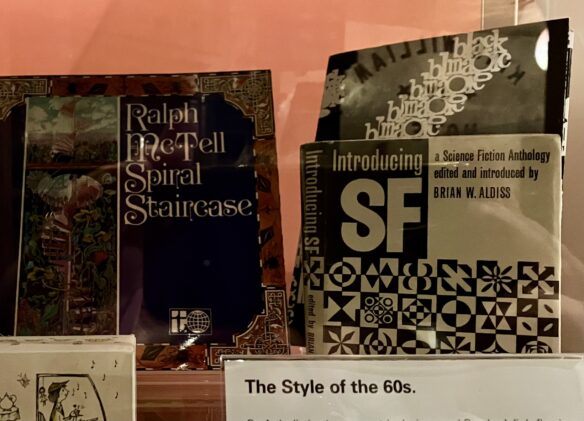
(14) CALLING FOR VOLUNTEERS. [Item by Hampus Eckerman.] Ok, this isn’t really news, but did you know that Vincent Price invented a dish called Dishwasher Salmon? As he was a master chef, I feel that this is something that needs to be tested by someone. Could some Filer help? Here’s the reference: Vincent Price in the Wikipedia.
…In 1971, Price hosted his own cooking program on British television, called Cooking Price-Wise produced for the ITV network by Thames Television, which was broadcast in April and May 1971. This show gave its name to Price’s fourth and final cookbook later that year. Price promoted his cookbooks on many talk shows, one of the most famous instances being the November 21, 1975, broadcast of The Tonight Show Starring Johnny Carson, when he demonstrated how to poach a fish in a dishwasher….
(15) THE VIEW FROM CHILE. “See world’s largest telescope come together beneath the Milky Way” at Space.com.
Newly released stunning images show that the Extremely Large Telescope is now halfway complete.
The images taken in June show the structure of the revolutionary ground-based Extremely Large Telescope (ELT) currently under construction atop the mountain Cerro Armazones located in Northern Chile’s Atacama Desert in extraordinary detail.When complete, the ELT will boast a 128-foot (39-meter) wide primary mirror that will represent the largest eye on the universe from the surface of Earth, able to view the cosmos in both visible and infrared light…


[Thanks to John King Tarpinian, Chris Barkley, Michael Toman, Kathy Sullivan, Steven French, Cat Eldridge, SF Concatenation’s Jonathan Cowie, Mike Kennedy, and Andrew Porter for some of these stories. Title credit belongs to File 770 contributing editor of the day Daniel Dern.]

